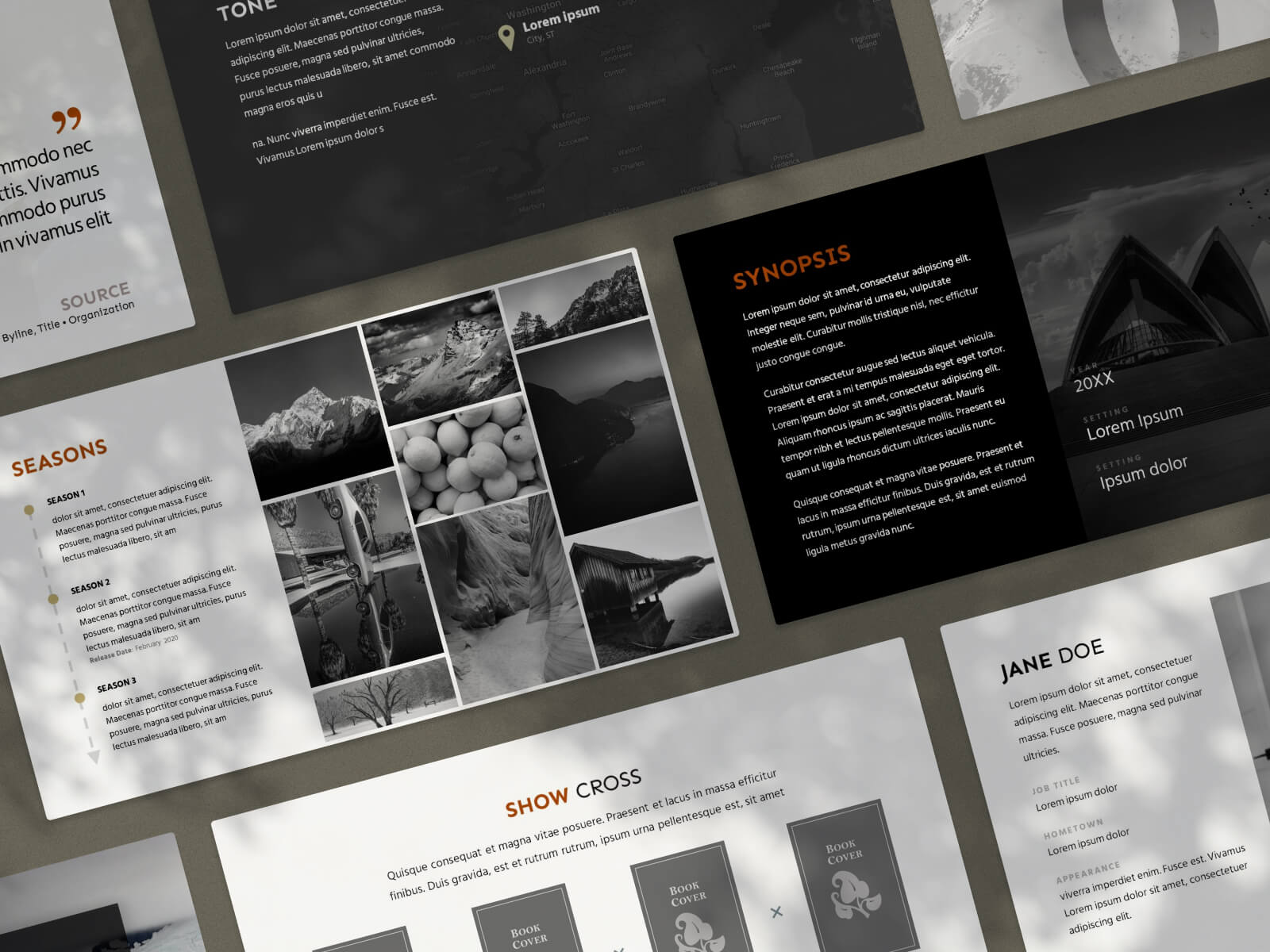The demand for fresh and captivating content has never been higher, thanks to new streaming platforms emerging regularly. According to Exploding Topics, there are approximately 1.8 billion subscriptions to video streaming services, and nearly 40% of all TV usage is dedicated to streaming.
With so many shows vying for attention in an ever-expanding creator economy, how do you make yours stand out? That’s where a TV show bible comes in. In this article, we’ll equip you with the knowledge to craft a show bible that will turn heads and get your dream series on the air.
What is a show bible?
A show bible is a document that serves as your show’s blueprint. It outlines everything from the core characters and themes to the specific story arcs for each season. It’s like a reference manual for your series that ensures consistency and clarity throughout the development and production process.
Why is it important to prepare a TV show bible?
Executives are busy people flooded with pitches. A show bible cuts through the noise, giving them a clear picture of your vision in a format that’s easy to digest. It showcases your world-building skills, character development chops, and ability to sustain a compelling narrative over multiple seasons.
Preparing a TV show bible is crucial for several reasons:
- Clarity and Consistency: It ensures all creative elements align with the original vision.
- Pitching: Provides a thorough and professional presentation to networks and producers.
- Development: Guides writers and producers in maintaining story and character coherence over multiple episodes and seasons.
- Collaboration: Helps various departments understand the show’s tone, style, and narrative structure.
What slides should be in your show bible?
Now that you know why a show bible is crucial, let’s break down the key elements that make a winning one:
Title
The title slide should prominently feature the name of your show. This sets the tone and gives the first impression of your series. Keep it short, catchy, and reflective of your show’s tone. Ask yourself: would this title stand out in a list of shows and make me want to click for more?
Logline
The logline is a brief, compelling summary of your show’s premise—this is your show’s elevator pitch. Who’s your main character? What problem are they facing? What makes your show unique? In a single, captivating sentence, compress your entire series concept.
Characters
Focus on 3-4 key characters who drive the story and give each one a clear bio that reveals their personality, goals, and desires. Cast your characters! Think of established actors or rising talents who could portray these roles. This will help decision-makers visualize the characters and their connections to the plot.
Theme
Every great show explores a deeper theme. Is it about family, redemption, or the fight for justice? Understanding your theme will help you write a cohesive story and connect with viewers on a deeper level.
Tone, style, & structure
Is your show a laugh-out-loud comedy or a suspenseful thriller? Do your stories follow a case-of-the-week format, or is there a larger, overarching plot? Clearly define your stylistic choices and narrative structure (episodic, serialized) to give executives a clear picture of the viewing experience.
Setting
Where and when does your story take place? Is it a bustling futuristic city or a sleepy seaside town? Describe the setting in detail to help readers immerse themselves in your world.
About the writer
Give readers a glimpse into your background. Highlight your writing experience and any relevant skills or experiences that make you uniquely qualified to create this show.
Season one breakdown
Outline the major plot points and character arcs for the first season. This should give a clear idea of the overall direction and key events.
- Season Arc: Briefly outline the overarching storyline for the first season. What challenges will your characters face? What will they learn and achieve by the end?
- Episode Synopses: Craft bite-sized summaries for each episode in season one, highlighting key plot points and character development.
Show executives like to know there’s potential for more. Give a glimpse into where your story could go in future seasons, hinting at potential plot twists and character arcs.
Why the series is important
Here’s your chance to convince executives why your show matters. Is it a unique take on a familiar genre? Does it address a relevant social issue? Make your show stand out from the crowd.
Tips for designing a winning show bible
- Write the Show Bible Before the Script: Don’t jump straight into scripting. A solid show bible will guide your writing and ensure a cohesive overall vision.
- Be Clear About Your Season 1 Breakdown: Demonstrate a strong grasp of your first season’s narrative arc and how it builds the foundation for future seasons.
- Establish Your Clear and Unique Tone and Style: Make sure your show’s voice stands out and is consistently reflected throughout the bible.
Examples of show bibles for inspiration
Want to see these elements in action? Here are a few links to real-world show bibles for well-known TV shows:
- Adventure Time: See the original show bible used by Pendleton Ward to pitch the now iconic Nickelodeon / Cartoon Network show
- Stranger Things: The Duff Brothers used this 23-page show bible to pitch one of Netflix’s most popular series of all-time
Ready to start building your show bible?
To make your task easier, use a template tailored for screenplay pitches, like this TV Show Bible Template by VIP Graphics. This can streamline the process and ensure you include all necessary elements. You can find templates online or create your own based on the guidelines above.
Creating a well-crafted TV show bible can significantly enhance your ability to pitch and develop your series. It provides a roadmap for your show, ensuring everyone involved shares a unified vision. Start your show bible today and bring your TV series concept to life!

